Have you ever stopped to wonder why some words make you click Buy Now, while others keep you scrolling, reading, and learning more? That’s the power of writing, but not all writing is meant to do the same job.
Think about it this way: just like a journalist isn’t the same as a novelist, and a poet doesn’t write like a screenwriter, different types of writing serve very different purposes. When it comes to marketing, the two types of writing that usually get mixed up are copywriting and content writing.
Here’s the simple truth: copywriting is about persuading and inspiring you to take action, while content writing is about informing, educating, or entertaining you. If you’re trying to connect with your audience, knowing the difference isn’t just helpful, it’s essential.
In this post, I’ll break down the key differences between copywriting vs content writing, the unique skills behind each, and how you can use both to get better results in your work.
Table Of Contents
1 The Basics of Copywriting vs Content Writing
Before we dig deeper into the concepts, let us understand the basics of copywriting and content writing.
1.1 What is Copywriting?
Copywriting is about using words to persuade you, or your audience, to take a specific action. That might be buying a product, signing up for a newsletter, or clicking a button. The goal is simple: drive action and get results.
Good copy is short, impactful, and often urgent because it needs to grab attention fast. Think about product pages that say something like Only 3 left in stock—order now! That’s copywriting in action, pushing you to act right away.

1.2 What is Content Writing?
Content writing, on the other hand, is all about giving your audience value. Instead of pushing for an instant decision, it focuses on educating, entertaining, or building trust over time.
This kind of writing is usually more detailed and in-depth, designed to keep you engaged. For instance, a blog post that walks you step by step through solving a problem isn’t trying to sell immediately; it’s helping you first, and building a connection along the way.
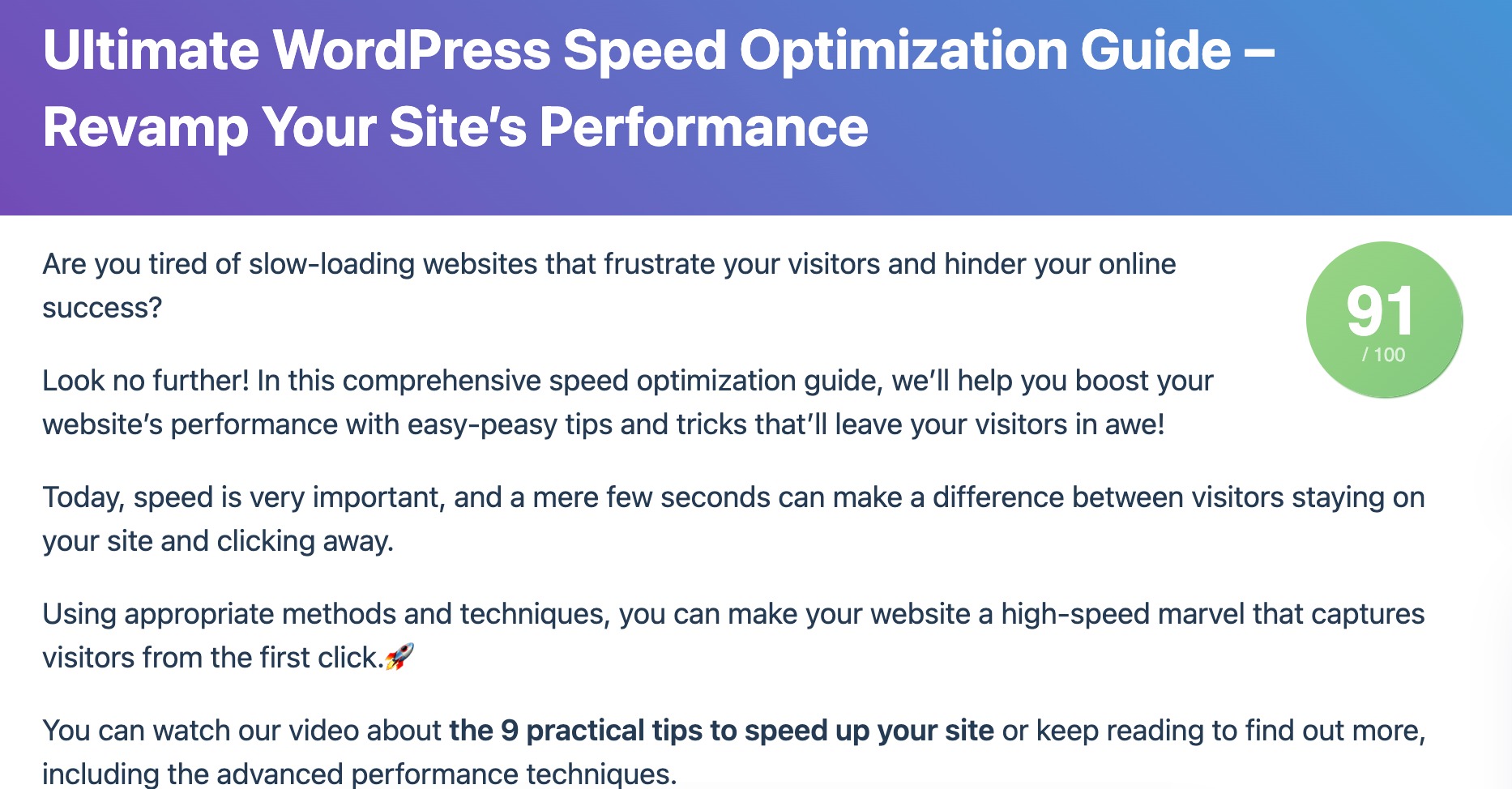
2 The Skills Required for Copywriting
Copywriting and content writing both play an important role in marketing, but they need different skills to get the results you want. Let’s start with the key skills you need for copywriting.
2.1 Persuasive Writing
Copywriting is all about persuading your audience to take action. That can mean clicking a button, buying a product, or signing up for a service.
Good persuasive writing speaks directly to your readers’ emotions, desires, and needs. Words and phrases like ‘Hurry, limited time offer!’ or ‘Transform your life today’ create urgency or spark aspiration.
For example, an ad like ‘Trip Guarantee Starting @ Re.1 on trains!’ works because it promises a benefit in a simple, clear way.

Persuasive writing isn’t just about flashy words; it’s about understanding the audience and what motivates them. You can even use tools like our AIDA (Attention, Interest, Desire, Action) copywriting tool to create content that encourages readers to act.
2.2 Understanding Buyer Psychology
Another key skill is knowing what drives your audience. Understanding buyer psychology means recognizing the emotions, problems, and desires that influence decisions.
When you address these factors in your copy, your messages feel personal, relevant, and trustworthy. For example, Dropbox uses phrases like ‘Securely store your content’ to appeal to both practical needs and emotional concerns.

By knowing what motivates your audience, whether it’s saving money, solving a problem, or improving their life, you can write copy that truly connects.
You can use our tools like IDCA (Identify, Develop, Communicate, Ask) or PAS (Problem, Agitate, Solution) to communicate a solution to your audience.
2.3 Creativity and Originality
Creativity and originality are at the heart of great copywriting. When visitors are bombarded with messages every day, it’s the creative and memorable ones that really grab attention.
Being creative means using humour, storytelling, wordplay, or a fresh perspective to make your message stand out. But it’s not just about being clever, it’s about matching your creativity with your brand’s voice and values so it feels authentic to your audience.
Originality takes it a step further. It makes sure your message feels unique and different, not something your audience has seen a hundred times before. For example, KFC’s slogan ‘Finger Lickin’ Good’ is playful, memorable, and perfectly reflects the brand. That originality helps create a strong emotional connection and strengthens the brand identity.
You can also use tools like our Content AI to help you create original, high-quality content. One big benefit of using AI is saving time, 71% of users say it’s their main advantage.

2.4 Writing Effective Calls to Action (CTAs)
A good call-to-action, or CTA, is one of the most important parts of persuasive copy. It’s a short phrase that tells your audience exactly what to do next, like ‘Shop Now,’ ‘Subscribe,’ or ‘Learn More.’
A strong CTA doesn’t just guide your audience, it encourages them to take action by creating urgency, showing value, or making things easy.
For example, on our pricing page, our call to action (CTA) highlights the benefits of trying our product at a low cost and taking advantage of special discounts. This makes it clear and appealing for you to act.
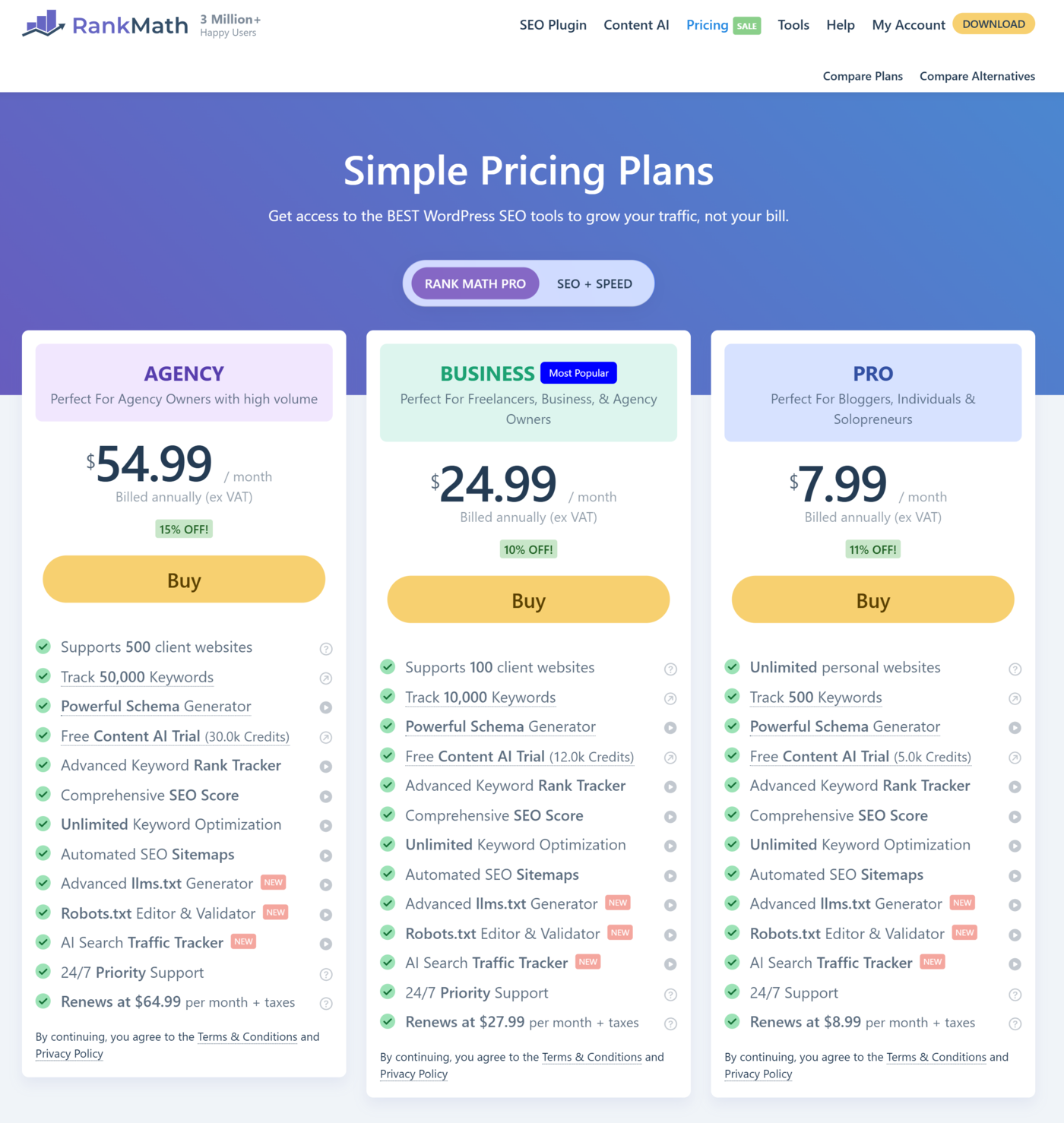
When you write CTAs, keep them simple, clear, and impactful. By doing this, you can significantly improve engagement and conversions.
3 The Skills Required for Content Writing
Content writing is about creating longer, valuable content that educates, informs, or entertains your audience.
It’s more about building relationships than making immediate sales, you want to engage your readers and earn their trust. Let’s look at the key skills you need for effective content writing.
3.1 Research and Fact-Checking
Good content starts with research and fact-checking. To write content that’s accurate and trustworthy, you need to check reliable sources, verify facts, and analyze information carefully. This helps you build credibility and shows your audience that they can rely on your content.
For example, our blog Schema Markup – The ONLY Guide You Need to Read in 2026 doesn’t just explain what Schema markup is; it gives a step-by-step guide so readers can understand and apply it.
You can also use our Topic Research AI tool to help create well-researched content that adds real value for your readers.
To do so, ensure you’ve enabled the Content AI module from your WordPress dashboard, as shown below.

Once done, select our Topic Research AI tools from the list of available 40+ AI tools.
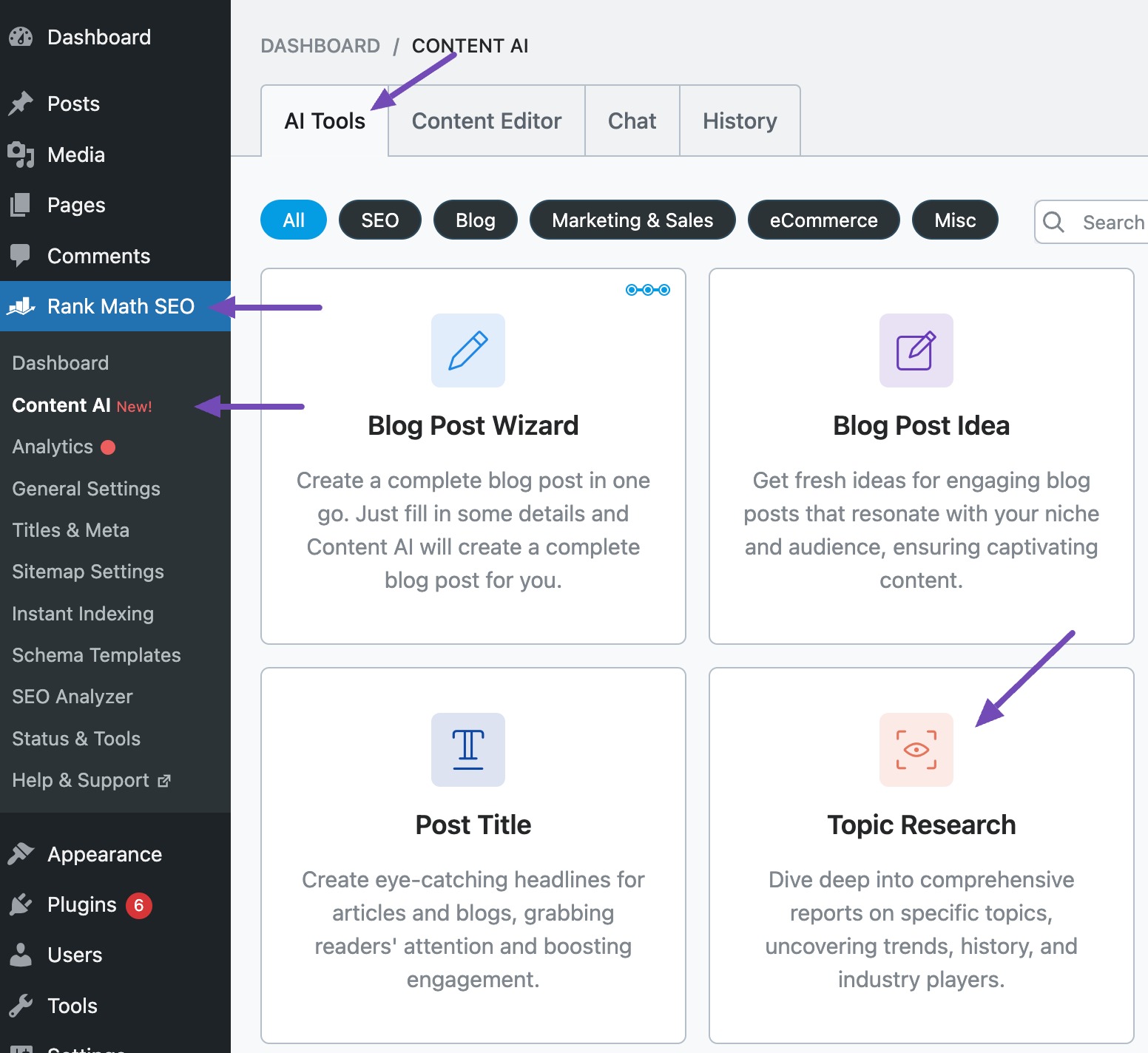
In the Topic field, summarize your intended blog post so our Content AI gets the hang of what to research. This is a required field and should contain 200 characters or less.
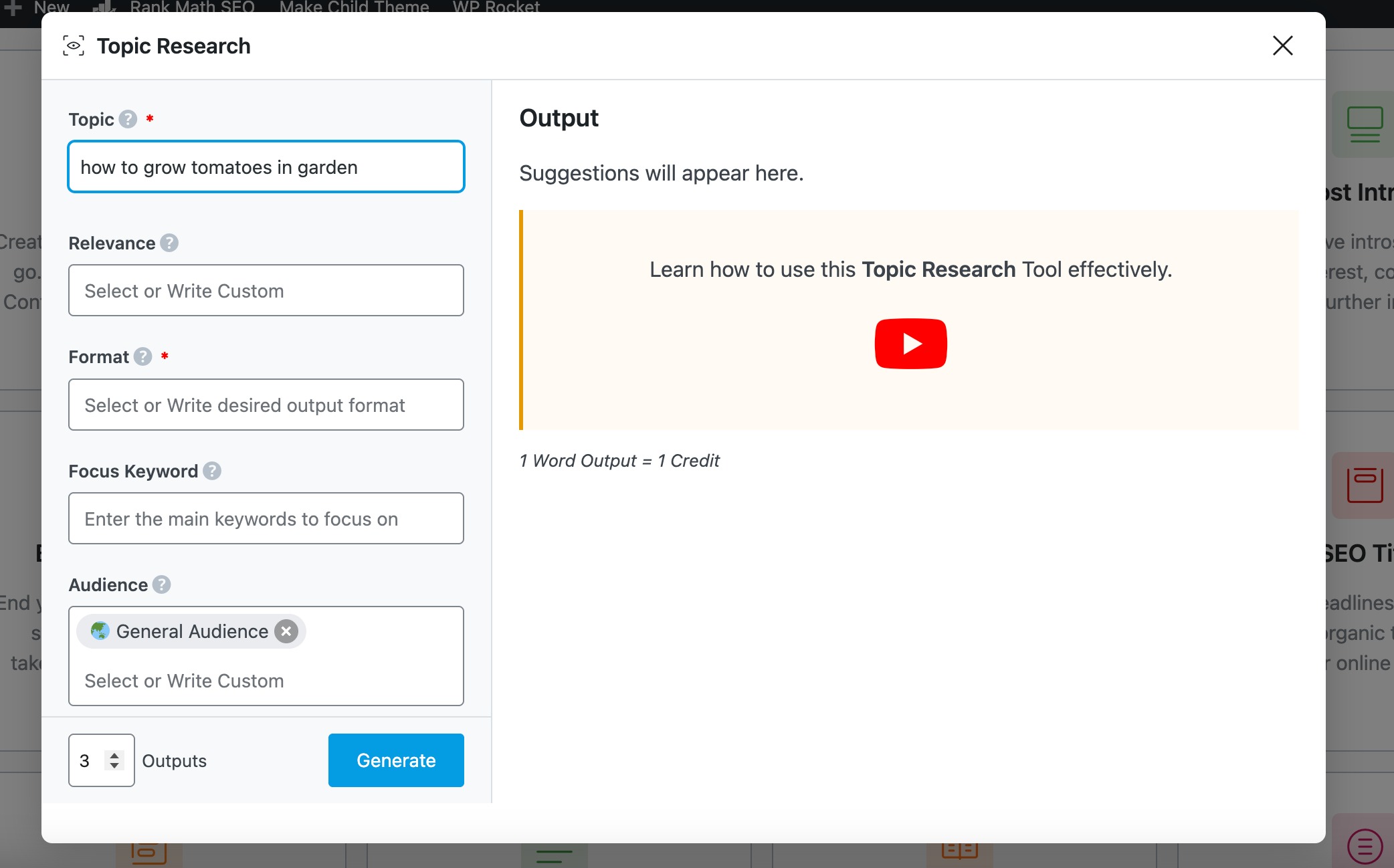
Click the Generate button once you have filled in the fields available in the Topic Research AI tool.
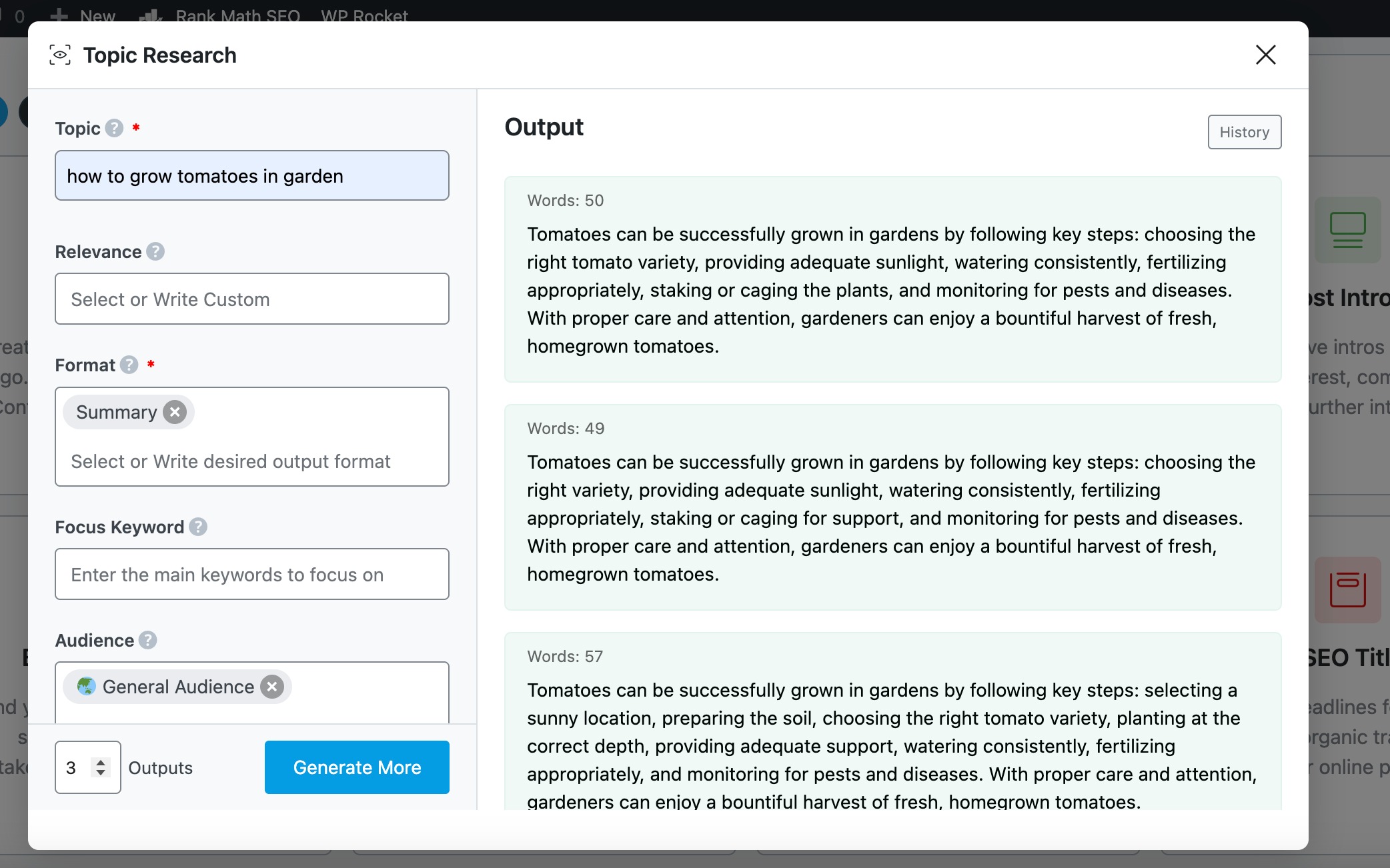
3.2 Storytelling and Engagement
Storytelling is another essential skill. By weaving emotional and relatable stories into your content, you can make it memorable and keep readers hooked. Stories give context, make your points easier to understand, and help readers connect with your message.
For instance, Nike’s campaigns often tell stories that inspire, like ‘Just Do It’, highlighting women breaking barriers in sports. This creates an emotional connection while reinforcing Nike’s brand values.

3.3 Adaptability in Tone and Style
As a content writer, one of the most valuable skills you can have is adapting your tone and style. Different audiences and platforms need different approaches. What works for a LinkedIn article may not work for an Instagram caption. When you learn to adjust your tone, your content always feels relevant, engaging, and on point.
To make this easier, you can use Rank Math’s Content AI. It lets you adjust the tone of your writing so it matches your audience’s preferences, while still being search-friendly.
By default, Content AI uses a formal tone, which is great for professional writing. But if you want something more casual, friendly, or persuasive, you can easily adjust this setting in the Content AI Global Settings.
To access the Content AI Global settings, head over to Rank Math SEO → General Settings → Content AI in your WordPress dashboard, as shown below.
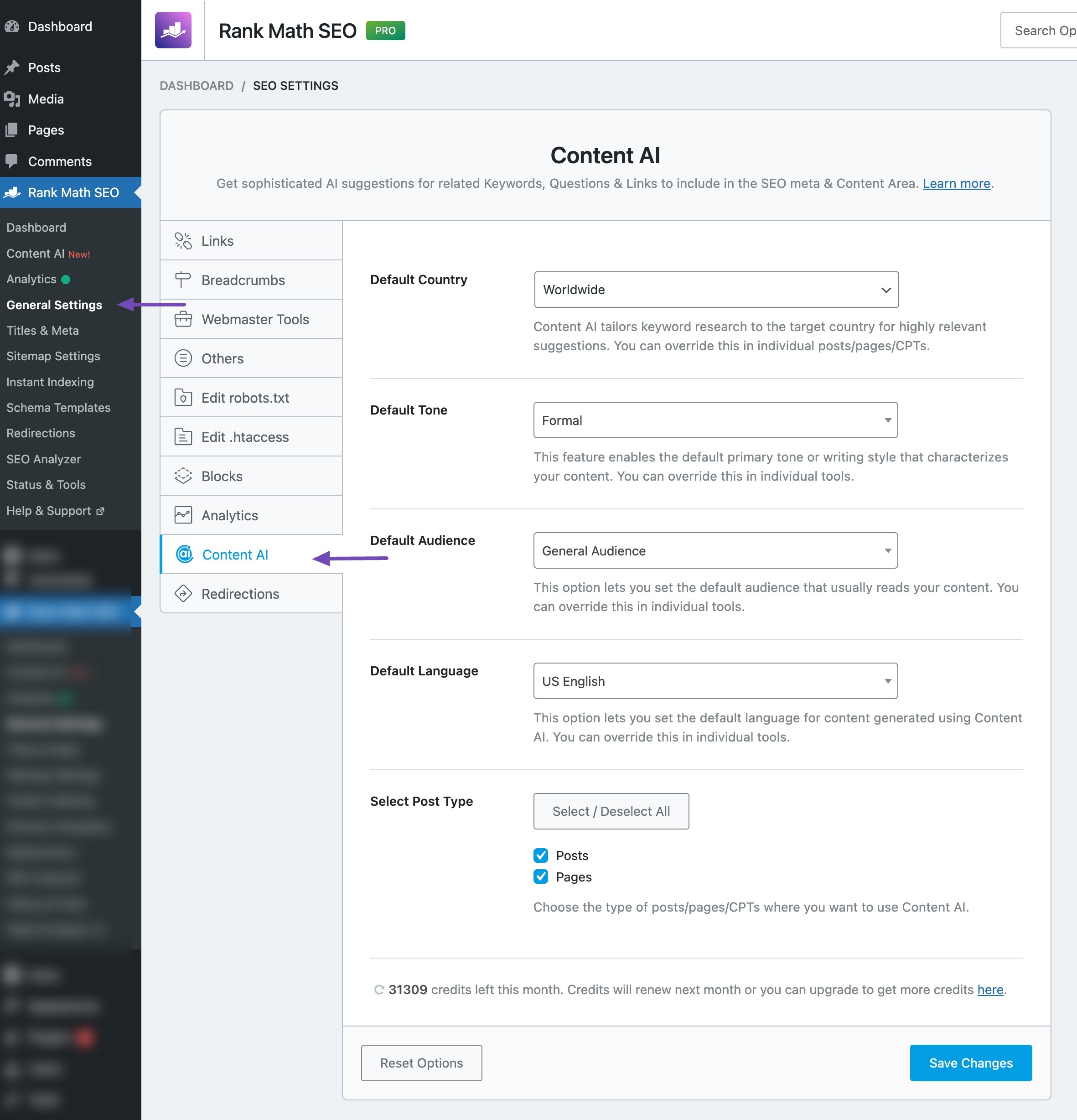
You can then change the default tone by clicking the dropdown to select your preferred tone. The selected tone will be the default tone for all Content AI outputs, including outputs generated by the AI Assistant block.
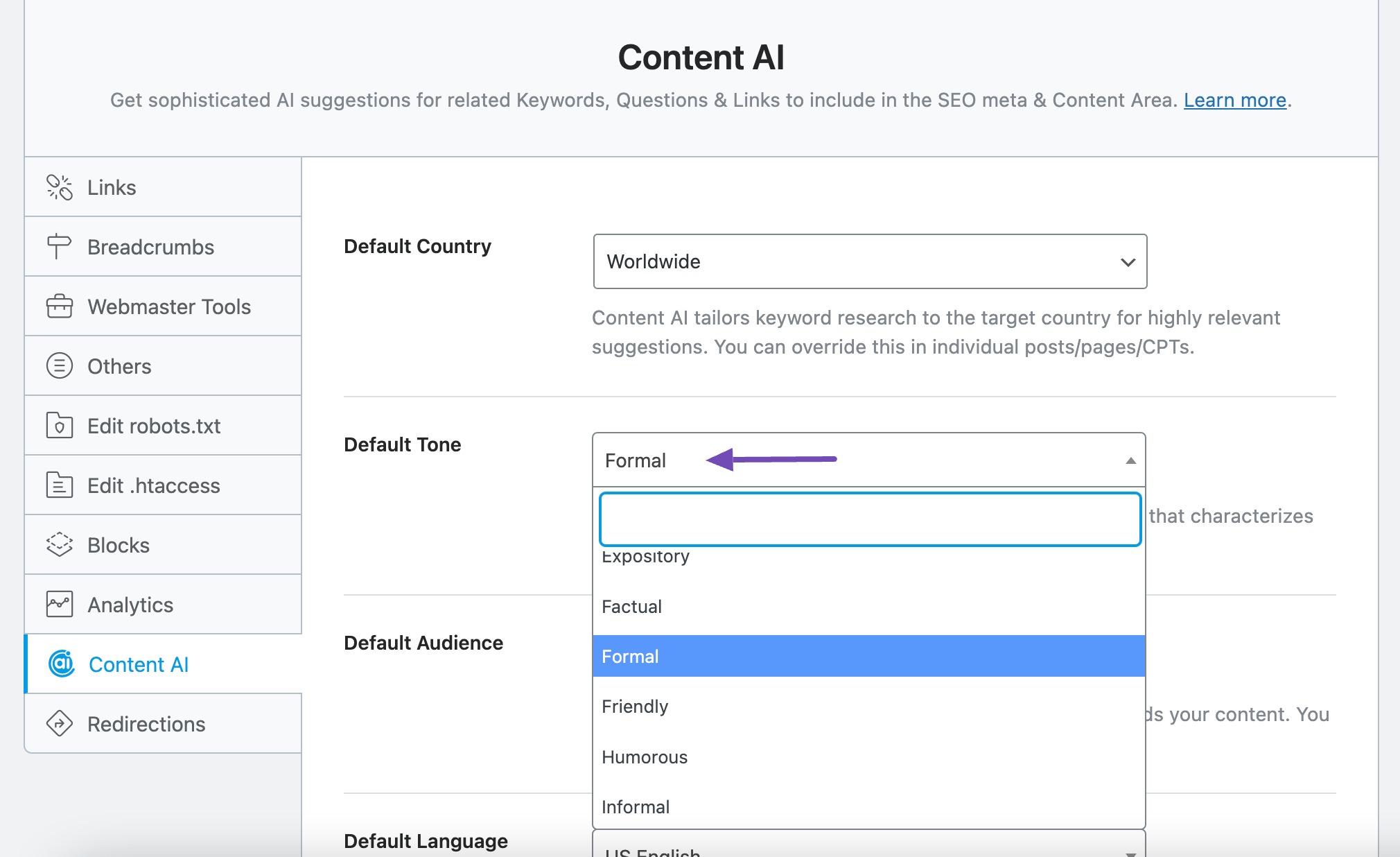
This feature helps ensure that your writing style aligns with your target audience.
3.4 SEO Knowledge
When you create content, having SEO knowledge makes a huge difference. It’s not just about writing long-form articles; it’s about making sure visitors can actually find and read them.
You need to know how to use the right keywords, write eye-catching meta titles and descriptions, and add internal links that guide readers deeper into your site. All of these small steps help search engines understand what your content is about, which means better visibility and more organic traffic for you.
This can feel like a lot to manage, but that’s where Rank Math makes things easier for you. It suggests the right keywords, checks if our content is easy to read and relevant, and reminds you to use proper meta tags and internal links.
With our content analysis, you don’t have to guess; you know exactly what to improve so your posts get the most traffic possible.

4 Copywriting vs Content Writing: A Comparative Showdown
| Aspect | Copywriting | Content Writing |
| Primary Goal | Drive immediate action, such as making a purchase, subscribing, or clicking a link. | Educate, inform, or entertain the audience to build long-term relationships. |
| Focus | Persuasion and concise messaging to convert readers into customers. | Delivering valuable, in-depth information to engage and retain an audience. |
| Examples | Ads, email campaigns, landing pages, CTAs, product descriptions. | Blog posts, articles, newsletters, eBooks, white papers. |
| Tone | Direct, persuasive, and action-oriented. | Informative, conversational, and engaging. |
| Skills Required | Persuasive writing, emotional appeal, understanding buyer psychology, creativity. | Research, fact-checking, storytelling, SEO optimization, and audience engagement. |
| Audience Connection | Focuses on the customer’s immediate needs or desires to spark action. | Builds trust and authority over time by providing consistent value. |
| SEO Emphasis | Uses targeted keywords sparingly for high-impact, action-driven copy. | Incorporates comprehensive keyword strategies for organic traffic and search visibility. |
| Ideal Length | Short, impactful, and to the point (e.g., headlines, taglines). | Longer, more detailed, and more informative to cover topics thoroughly. |
5 Frequently Asked Questions
Can one person do both writing styles?
Yes, many marketers and writers use both skills. However, copywriting requires persuasive, concise language, whereas content writing requires research, storytelling, and depth.
Which one leads to higher conversions?
Copywriting typically leads to higher direct conversions because it’s designed to motivate immediate action (e.g., “Buy now,” “Sign up”), while content writing builds trust and audience awareness that supports conversions over time.
6 Final Thoughts: Choosing the Right Writing Style for Your Goals
At the end of the day, both copywriting and content writing play important roles in building your online presence.
I see copywriting as the art of convincing my audience to take action, while content writing helps to build trust and provide value over time. When you understand the difference, you can decide when to focus on one and when to use the other.
If you want to attract readers, nurture them with valuable information, and then guide them toward taking action, you’ll need a balance of both. As you create your next piece of content, ask yourself: am I trying to inform, persuade, or both? Once you’re clear on that, you’ll be able to write with more purpose and get better results.
If you like this post, let us know by tweeting @rankmathseo.
